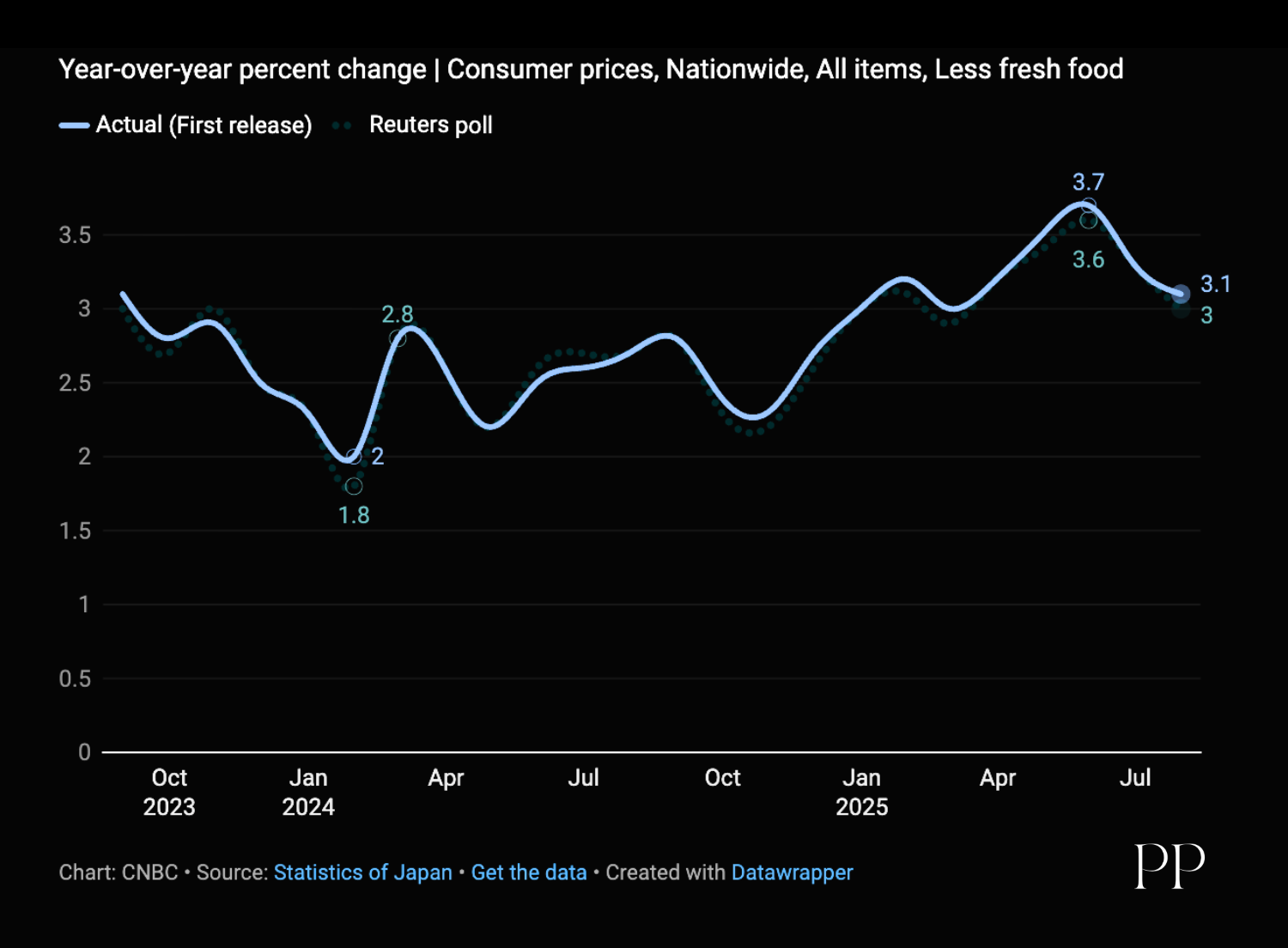Japan Core Inflation Dips to Lowest Since March
Image Credit : Afp | Getty Images
Source Credit : CNBC
Japan’s core inflation rate cooled to 3.1% in July, coming down from 3.3% the month before as rice inflation continued to ease.
The figure — which strips out costs for fresh food — was higher than the 3% expected by economists polled by Reuters.
Headline inflation in the country also dropped to 3.1%, coming down from 3.3% in June and marking its lowest since November 2024.
The so-called “core-core” inflation rate, which strips out prices of both fresh food and energy and is closely monitored by the BOJ, held steady at 3.4%.
Rice inflation eased to 90.7% in July, down from 100.2% in June, and after two months during which prices had more than doubled.
Rice prices have shown signs of easing after a rice shortage and skyrocketing rice prices dominated headlines in the country earlier this year, with data from Japan’s agricultural ministry showing that the average bag of five-kilogram rice in supermarkets was being sold for 3,737 Japanese yen ($25.34) for the week of Aug. 4.
At its highest, rice was retailing at an average of 4,285 yen per five-kilogram bag, while premium rice brands reached 4,469 yen.
“Core-core” inflation expectations were raised to 2.8% from 2.3%.
Japan core inflation index
 Japan’s central bank had upgraded its inflation forecasts in its economic outlook report released on July 31, saying that core inflation would come in at 2.7% for its 2025 fiscal year — ending March 2026 — up from its previous forecast of 2.2%.
The 3.1% headline inflation reading was the 40th straight month that it was above the Bank of Japan’s 2% target.
“The BOJ is behind the curve [in raising interest rates],” Jesper Koll, expert director at Tokyo-based financial services firm Monex Group, told CNBC, citing the hit to purchasing power.
He argued that policy rates would have to climb to 2.5% to 3.5% for real interest rates to hit a neutral level. The BOJ’s policy rate currently stands at 0.5%.
Japan’s central bank had upgraded its inflation forecasts in its economic outlook report released on July 31, saying that core inflation would come in at 2.7% for its 2025 fiscal year — ending March 2026 — up from its previous forecast of 2.2%.
The 3.1% headline inflation reading was the 40th straight month that it was above the Bank of Japan’s 2% target.
“The BOJ is behind the curve [in raising interest rates],” Jesper Koll, expert director at Tokyo-based financial services firm Monex Group, told CNBC, citing the hit to purchasing power.
He argued that policy rates would have to climb to 2.5% to 3.5% for real interest rates to hit a neutral level. The BOJ’s policy rate currently stands at 0.5%.

